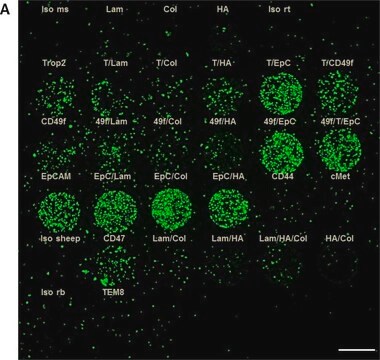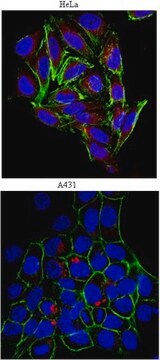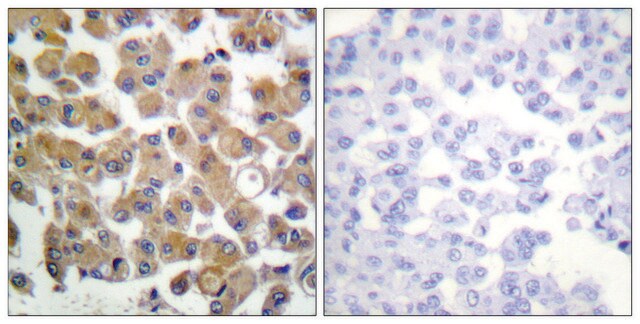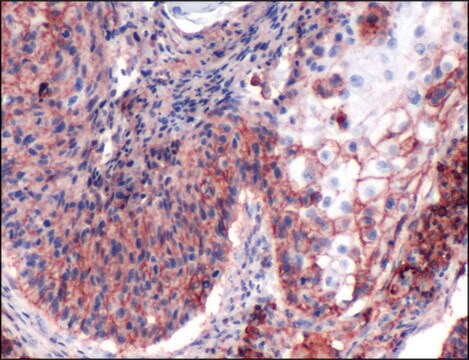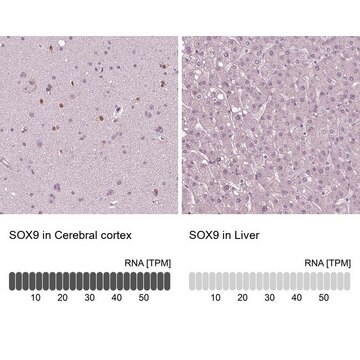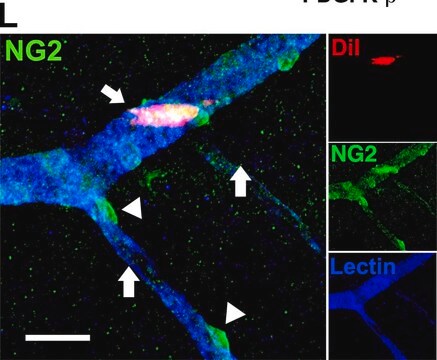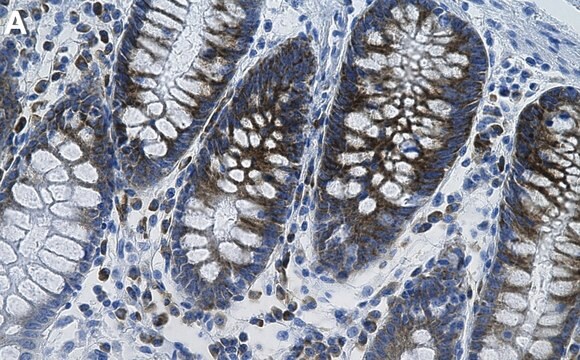MABF3163
Anti-CD44 Antibody, clone HERMES-3
Synonym(s):
CD44 antigen, CDw44, ECMR-III, Epican, Extracellular matrix receptor III, GP90 lymphocyte homing/adhesion receptor, HUTCH-I, Heparan sulfate proteoglycan, Hermes antigen, Hyaluronate receptor, PGP-1, Phagocytic glycoprotein 1
About This Item
Recommended Products
biological source
mouse
Quality Level
antibody form
purified antibody
antibody product type
primary antibodies
clone
HERMES-3, monoclonal
mol wt
observed mol wt ~85-95 kDa
purified by
using protein G
species reactivity
mouse, human
packaging
antibody small pack of 100
technique(s)
ELISA: suitable
flow cytometry: suitable
immunocytochemistry: suitable
immunofluorescence: suitable
immunohistochemistry: suitable
immunoprecipitation (IP): suitable
inhibition assay: suitable
western blot: suitable
isotype
IgG2aκ
epitope sequence
Extracellular domain
Protein ID accession no.
UniProt accession no.
storage temp.
-10 to -25°C
Gene Information
human ... CD44(960)
Specificity
Immunogen
Application
Evaluated by Western Blotting in Human fetal foreskin tissue lysate.
Western Blotting Analysis: A 1:500 dilution of this antibody detected CD44 in Human fetal foreskin tissue lysate.
Tested Applications
Western Blotting Analysis: A 1:500 dilution from a representative lot detected CD44 in human tonsil tissue extracts.
ELISA Analysis: A representative lot detected CD44 in ELISA applications (Torrado, E., et al. (2013). PLoS One. 8(4):e61681).
Immunocytochemistry Analysis: A representative lot detected CD44 in Immunocytometry applications (Picker, L.J., et al. (1989). J Cell Biol. 109(2):927-37).
Flow Cytometry Analysis: A representative lot detected CD44 in Flow Cytometry applications (Jalkanen, S., et al. (1987). J Cell Biol. 105(2):983-90; Zhang, N., et al. (2012). Nat Immunol. 13(7):667-73).
Inhibition Assay: A representative lot selectively inhibited lymphocyte binding to lymph node and mucosal high endothelial venules. (Jalkanen, S., et al. (1987). J Cell Biol. 105(2):983-90).
Immunohistochemistry Applications: A representative lot detected CD44 in Immunohistochemistry applications (Huang, Z., et al. (2014). J Immunol.;192(11):5285-95).
Western Blotting Analysis: A representative lot detected CD44 in Western Blotting applications (Picker, L.J., et al. (1989). J Immunol. 142(6):2046-51; Picker, L.J., et al. (1989). J Cell Biol. 109(2):927-37).
Immunofluorescence Analysis: A representative lot detected CD44 in Immunofluorescence applications (Huang, Z., et al. (2014). J Immunol.; 92(11):5285-95).
Immunoprecipitation Analysis: A representative lot detected CD44 in Immunoprecipitation applications (Jalkanen, S., et al. (1987). J Cell Biol. 105(2):983-90).
Note: Actual optimal working dilutions must be determined by end user as specimens, and experimental conditions may vary with the end user.
Target description
Physical form
Reconstitution
Storage and Stability
Other Notes
Disclaimer
Not finding the right product?
Try our Product Selector Tool.
Storage Class
12 - Non Combustible Liquids
wgk_germany
WGK 2
flash_point_f
Not applicable
flash_point_c
Not applicable
Certificates of Analysis (COA)
Search for Certificates of Analysis (COA) by entering the products Lot/Batch Number. Lot and Batch Numbers can be found on a product’s label following the words ‘Lot’ or ‘Batch’.
Already Own This Product?
Find documentation for the products that you have recently purchased in the Document Library.
Our team of scientists has experience in all areas of research including Life Science, Material Science, Chemical Synthesis, Chromatography, Analytical and many others.
Contact Technical Service